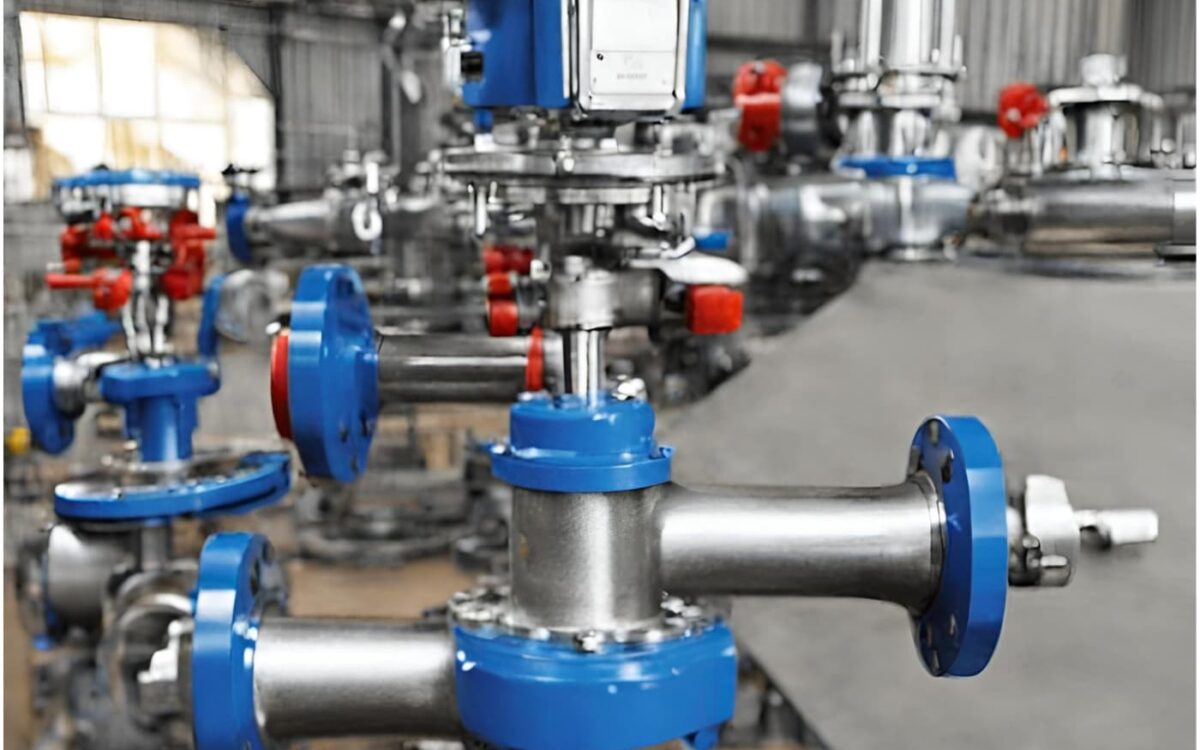Control valves, they play a pivotal role in regulating the flow of fluids and gasses. Whether it’s controlling the temperature in a manufacturing facility or managing the flow of liquids in a chemical plant, the right control valves are essential. Siemens control valves and Belimo control valves are two prominent options in this field. Today we’ll explore the critical factors to consider when selecting the perfect control valve, ensuring that it aligns with your specific application and industry requirements.
Types of Control Valves
Control valves come in various types, each designed for specific functions and applications. Understanding these types is crucial in making the right choice:
- Globe Valves: Globe valves are known for their excellent control capabilities. They are often used in applications where precise regulation of flow rate and pressure is essential. The globe-shaped body design allows for a linear flow path, making it easier to control flow rates accurately.
- Butterfly Valves: Butterfly valves are commonly used in applications with large flow requirements. They are well-suited for situations where quick open and close functions are necessary. Butterfly valves offer a lightweight and compact design, making them cost-effective for larger pipe sizes.
- Ball Valves: Ball valves are known for their reliability and ease of use. They are often used in on/off applications where a tight seal is required. Ball valves provide quick shut-off capabilities, making them suitable for emergency situations.
- Gate Valves: Gate valves are ideal for applications requiring a tight seal and low pressure drop. They are commonly used in systems that do not require frequent operation. Gate valves offer full bore design, allowing for minimal flow restriction when fully open.
Each type has its strengths and limitations, making it essential to select the one that best suits your needs.
Siemens Control Valves: Advantages and Considerations
Siemens control valves are known for their precision and reliability. They offer advanced control solutions, making them suitable for complex processes across various industries. When considering Siemens control valves, several factors should be taken into account. First, assess their compatibility with Siemens control systems, as seamless integration can streamline operations. Second, evaluate the need for advanced control capabilities, such as PID control, which Siemens valves often excel at.
Additionally, Siemens valves tend to come with a higher initial investment, primarily due to their advanced features and capabilities. However, their long-term benefits in terms of accuracy, durability, and the ability to meet stringent industry standards make them a worthwhile choice for critical applications.
Belimo Control Valves: Features and Benefits
Belimo control valves are renowned for their energy efficiency and innovative features, making them a popular choice in HVAC and building automation systems. When considering Belimo control valves, several factors should be taken into account. First, assess their ease of integration with building automation systems, as seamless compatibility can simplify control processes. Second, consider the energy-saving features of Belimo valves, such as the ability to modulate control for optimal performance.
Belimo valves are also known for their cost-effectiveness, both in terms of initial purchase and long-term operation. Their ability to provide precise control in HVAC applications ensures energy-efficient heating, ventilation, and air conditioning systems. By choosing Belimo control valves, you can benefit from improved comfort, reduced energy consumption, and lower operational costs in your building automation applications.
These factors collectively contribute to the popularity of Siemens and Belimo control valves in various industries, where precise control and efficiency are paramount.
Sizing and Flow Rate Considerations
Sizing control valves correctly is crucial to ensure they can handle the required flow rate and pressure drop. An undersized valve can result in poor control and excessive wear, while an oversized valve can lead to inefficiency. To determine the right size, calculate the flow rate and pressure drop in your system. Consider factors such as the valve’s Cv (flow coefficient) and the desired control range. Consulting valve sizing tables and using specialized software can help in this process. Properly sized valves contribute to efficient control and prevent excessive wear and energy consumption.
Material Selection for Control Valves
Material compatibility is a critical consideration when choosing control valves. The selected materials should be resistant to corrosion and erosion caused by the fluid or gas being controlled. Factors such as temperature, pressure, and the presence of abrasive particles should influence material selection. Common materials used for control valves include stainless steel, brass, bronze, and various types of plastics. The choice of materials should align with your specific application to ensure longevity and reliability.
Control Valve Actuators: Types and Selection
Control valve actuators are responsible for moving the valve to regulate the flow of fluids or gasses. Various types of actuators are available, including electric, pneumatic, and hydraulic. The choice of actuator depends on factors such as control speed, precision, and the availability of power sources. Electric actuators are suitable for applications that require precise control and automation, while pneumatic actuators are known for their reliability and simplicity. Hydraulic actuators are often used in heavy-duty applications. Selecting the right actuator type is essential to achieve the desired control performance.
Maintenance and Lifecycle Costs
When choosing a control valve, consider the long-term costs associated with maintenance and operation. Some valves may require more frequent maintenance, resulting in higher operational costs over time. Factors such as ease of maintenance, availability of spare parts, and the valve’s durability should be evaluated. While some valves may have a higher initial cost, they may prove cost-effective in the long run due to reduced maintenance requirements and extended operational life.
Conclusion
In conclusion, selecting the perfect control valve involves a careful evaluation of various factors, including valve type, compatibility, size, and material. Whether you opt for Siemens control valves or Belimo control valves, understanding your application’s specific needs and industry requirements is key. Making an informed choice will not only enhance control precision but also contribute to the overall efficiency and reliability of your industrial or HVAC system.
